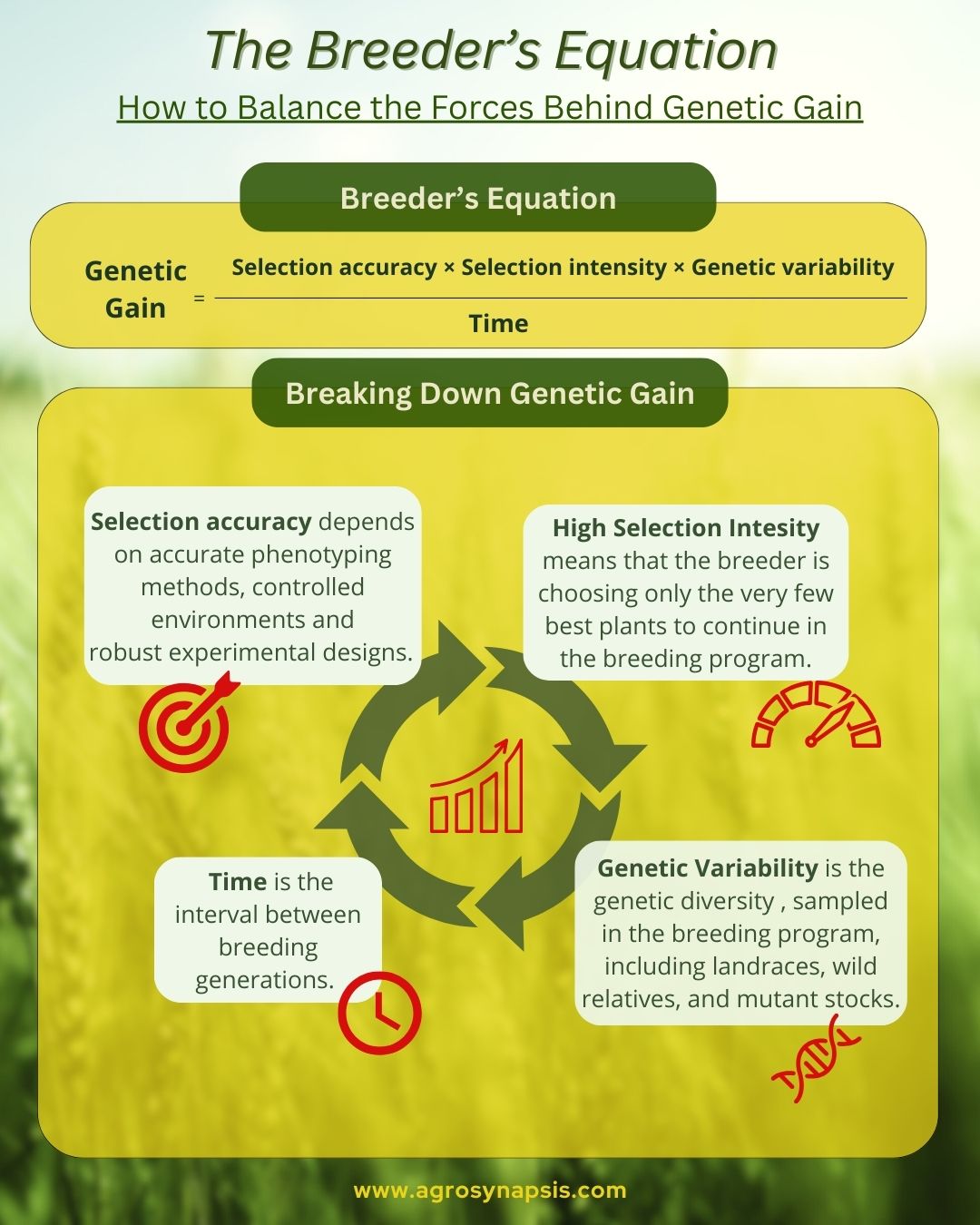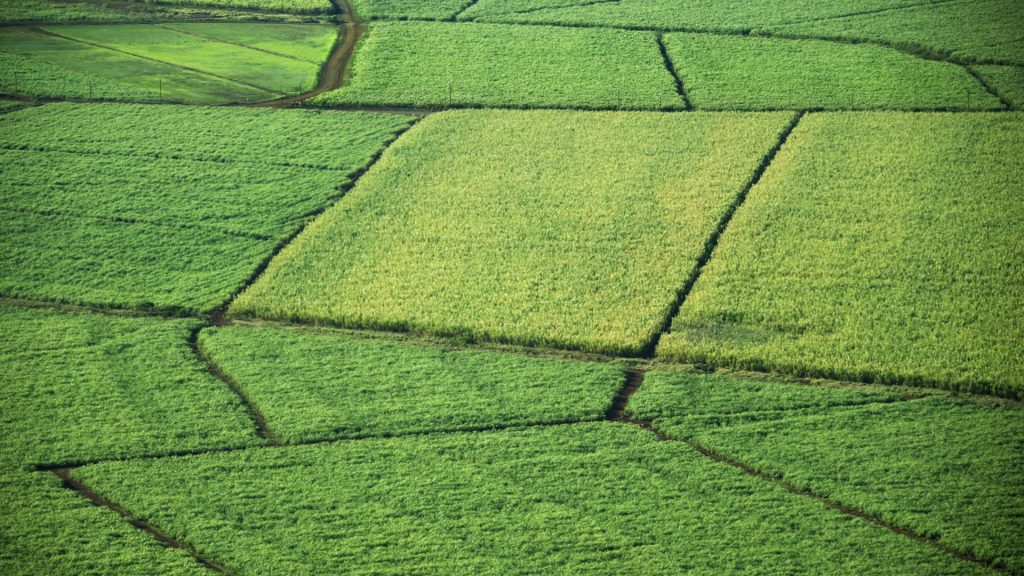I’ve worked with breeders for many years and often saw them rely on both an empirical eye and strategic planning. During my academic years, I learned about the Breeder’s Equation—an elegant and intuitive way to connect these two worlds.
How does it work? With a bit of quantitative magic, the Breeder’s Equation breaks down genetic gain into four interconnected elements:
👉 Genetic gain = (Selection accuracy × Selection intensity × Genetic variability) / Time
Let’s see how the Breeder’s Equation helps breeders fine-tune these forces when shaping selection strategies:
🎯 Selection Accuracy
This is where a breeder moves from simple observation to data-driven decisions. By using accurate phenotyping protocols—such as remote sensing, controlled environment trials, or robust experimental designs—breeders can capture the true genetic effects of traits and reduce environmental “noise.” The equation helps them guide how much resource investment is needed to reach the right level of accuracy and ensure decisions are based on genetics, not just field appearance.
📈 Selection Intensity
This refers to the proportion of individuals advanced to the next generation. The more candidates we can test, the more intensely we can select for desired traits. Thanks to modern technologies—like high-throughput phenotyping, remote sensing, or marker-assisted selection—we can now evaluate larger populations faster and at lower cost, enabling higher selection intensity than ever before.
⚠️ But if selection is too strict in the early generations, valuable genetics may be lost. Plants may still be segregating, or their individual phenotypes may reflect environmental effects rather than true genetic potential.
🌱 Genetic Variability
All progress depends on the genetic diversity available in the program. Breeders expand this pool by incorporating valuable traits from landraces, wild relatives, and mutant stocks. The challenge is not only accessing these genetic resources but also overcoming their often unfavorable background traits so that desirable alleles can be introduced effectively into elite lines.
⚠️ Strict selection too early can cause a genetic bottleneck, leaving too few lines and limiting variability.
⏳ Time
The interval between generations is another critical factor for genetic gain. Techniques such as speed breeding (using controlled light, temperature, and day length to accelerate growth) or alternating seasons across hemispheres allow breeders to reduce cycle length and achieve genetic improvement faster.
🎯At AgroSynapsis, we have training programs that transform complex genetic concepts into attractive narratives and actionable insights.
𝗙𝗶𝗹𝗹 𝗼𝘂𝘁 𝗼𝘂𝗿 𝘀𝗵𝗼𝗿𝘁 𝘁𝗿𝗮𝗶𝗻𝗶𝗻𝗴 𝗶𝗻𝘁𝗲𝗿𝗲𝘀𝘁 𝗳𝗼𝗿𝗺 and be the first to receive early access and special discounts for training sessions.
Breeder’s Equation: A Guide to Balancing the Forces Behind Genetic Gain

by

